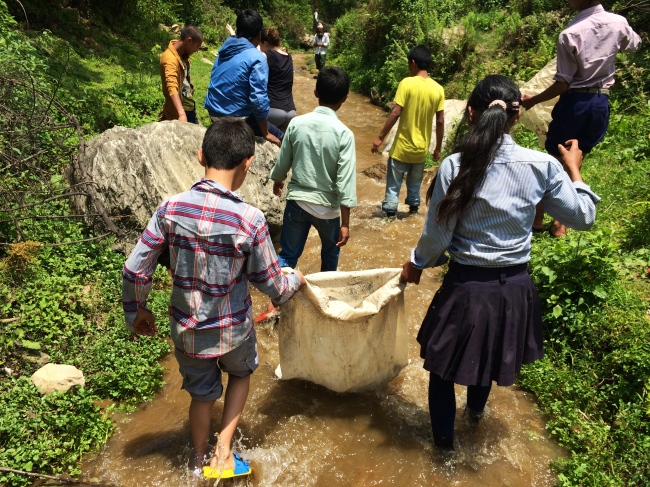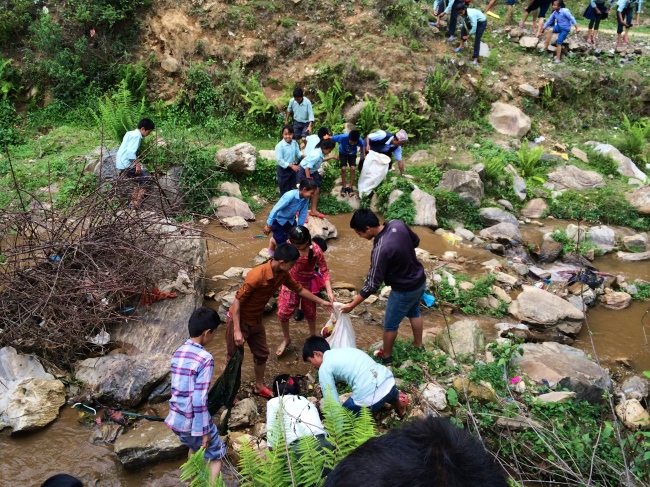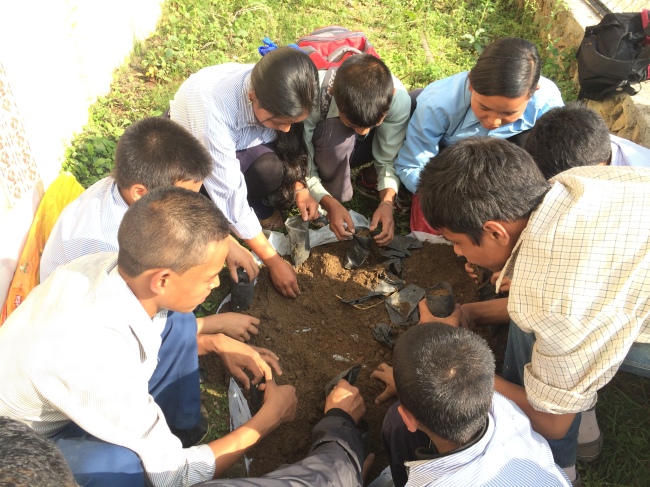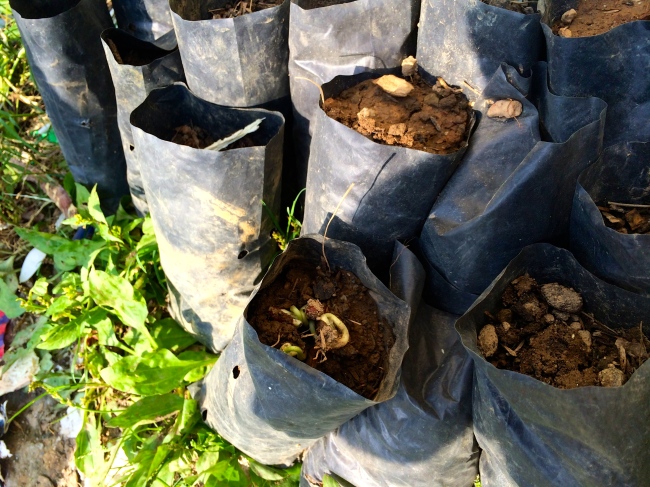For me, one of the most exciting aspects of staying in a rural Nepali village for three weeks was the opportunity to escape some of the undesirable realities of city life. Especially after experiencing the chaotic nature of Kathmandu, I was intrigued to leave behind the hustle & bustle and all that came with it: dust-filled air, smelly tap water, and an abundance of litter in the streets. Stepping off the bus in Rayale, I was met with some shocking and unwelcome sights. The village was, of course, picturesque and the views were breathtakingly beautiful, but the problem of pollution persisted. As an environmental studies major, I was troubled by the fact that these village residents – a community that depends so much on their natural surroundings for sustenance and livelihood – were treating the land so poorly. When one imagines an agricultural society in the countryside of Nepal, they certainly don’t expect to see the river, used for both drinking and washing, to be inundated with candy wrappers and old soda bottles!
On our fifth day in the village, both of the schools we were working in were closed for a holiday with an appealing premise: environmental clean-up. The idea could not have been welcomed more wholeheartedly by myself and the other GROW interns. After a handful of lightning-speed Nepali speeches from those in charge that hopefully contained a message of the day’s importance, the children hopped into the river and began their work. I followed closely and clumsily behind, trying to gather as much trash as possible without losing a shoe or succumbing to a deadly leech bite (just kidding, Mom).
However, while the organizers of the event certainly had good intentions, some of the specifics of the environmental clean-up revealed unfortunate gaps in their understanding of proper waste disposal. First of all, the plan was to make numerous piles of the collected trash and burn them. Because there was a variety of materials in these piles – from plastic shopping bags to metal cups to rubber shoes – this was neither the greenest nor most efficient way of solving the problem. Furthermore, these piles were all placed directly on the riverbank. When a huge storm occurred hours after the event’s conclusion, we joked that the clean-up had definitely been successful in moving the trash – a few kilometers down the river. If the goal is protecting the village’s main source of water, then new and improved waste management methods are necessary.
Although this environmental issue is far from being solved because it involves serious changes to Nepal’s infrastructure, other ecological concerns of Rayale were far more promising. The GROW interns and I spent a day with PHASE Nepal’s livelihood coordinator, Khabita, checking in on the status of one of the village’s “practical plots.” PHASE’s livelihood component involves education in areas such as vegetable farming, animal husbandry, and beekeeping, in an effort to teach villagers more sustainable and effective methods of such practices. The “practical plot” that we visited was one of five in the region, and contained tomato and cucumber plants grown from seeds provided by PHASE. Both proper planting knowledge and the plot’s produce were available to all nearby residents, and it was doing quite well. It was a real treat to experience the success of PHASE’s livelihood program – especially when we were able to taste one of the cucumbers!
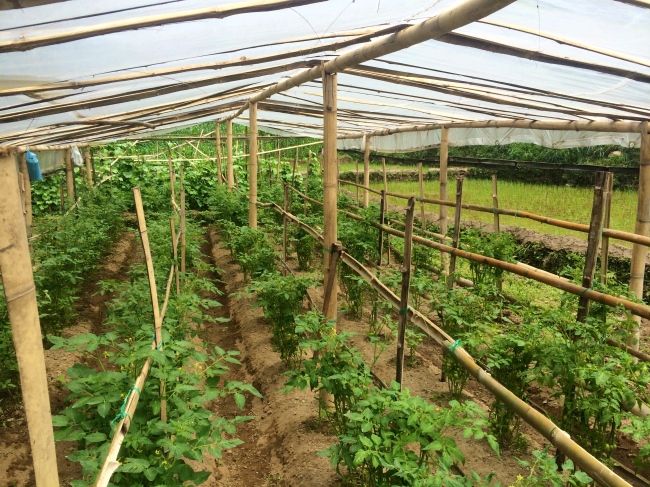
Before I came to Rayale, PHASE Nepal’s work with vegetable farming was always extremely interesting to me. Focusing on improving this major source of income is both useful to villagers and relatively easy for staff to implement. As an intern, I envisioned that this could be one way I could help the organization. During our time at Shree Bhalchandra School, Morgan and I were in charge of facilitating new activities for a child club, a collection of driven and passionate students between grades 6 and 9 that wanted to engage in social work and help their community. I suggested that we start a vegetable garden at the school, and the kids loved the idea. Morgan and I purchased seeds in Panauti, a nearby city, and the next week, our work began.
The child club started preparing by cleaning the grounds behind the school nursery, where our garden would be located. For such a narrow strip of land with few passersby, it was filled with trash – likely thrown out the windows from bored students. After disposing of the crumpled essays and food wrappers (organized into yet another pile to be burned), the students began to form a seed nursery with soil and fertilizer they brought from home. We formed an assembly line of burying seeds into the soil and passing them along to be kept with their respective types – even learning their Nepali names along the way! After repeating cacro (cucumber), golberra (tomato), chimi (green beans), and carella (bitter gourd) numerous times to Sujan, the chairman of the child club and final person in the line who placed each vegetable type together, I know I’ll never forget these four words.
Only time will tell if the garden is a success, but on our last day in the school, some of the green beans had sprouted! What was even better than watching the garden come to life was how inspiring the child club was. They were truly bothered by how polluted their school’s grounds were, and anxious to prevent it from becoming that way again. They began watering the garden every day before and after school, and Sujan told me that he wanted to create a rule that would enact punishments on litterers, especially near the garden. Rayale’s pollution situation has a long way to go, but with zealous and fiery kids like the Bhalchandra Child Club in charge of fixing the problem, the future looks green!
Nick James Macaluso is a senior majoring in Biology and Environmental Studies. He is a member of the Campaigns team.
